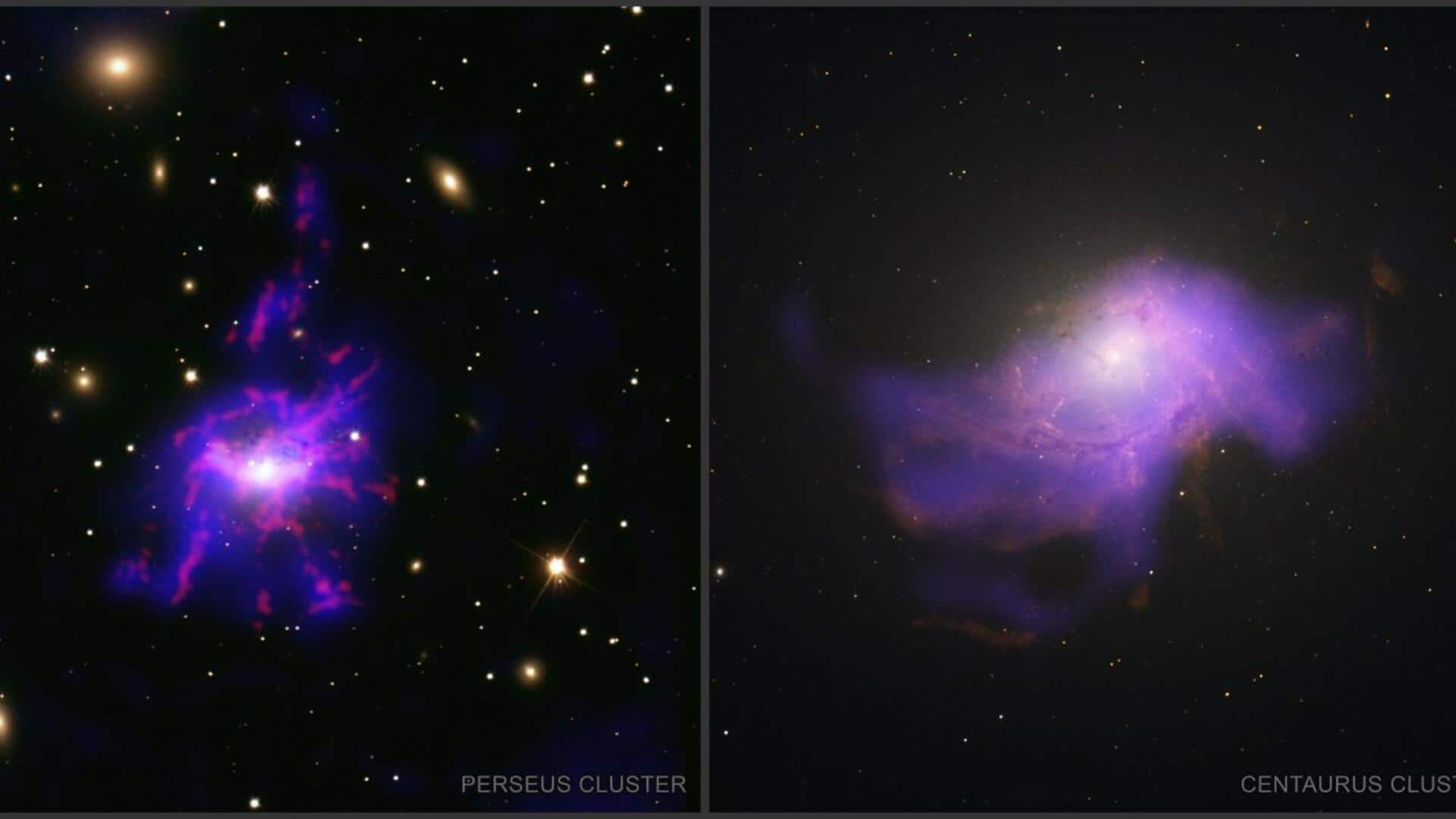
We now know how black holes 'feed' themselves
What's the story
A team of astronomers has revealed how black holes feed. The study, led by Valeria Olivares from University of Santiago de Chile, used data from Chandra X-ray Observatory and Very Large Telescope. The researchers studied seven galaxy clusters, each hosting enormous black holes at their centers. These black holes feed on surrounding gas and release jets that cool the gas to form filaments. Some of the filaments flow back into the black holes, creating more jets and continuing the cycle.
Visual confirmation
Brightness correlation confirms feeding method
The research team found a correlation between the brightness of hot and warm gases at the centers of galaxy clusters. When the hot gas shines brighter, so does the warm gas. This finding confirms that black holes feed on surrounding gas. The Perseus and Centaurus galaxy clusters offer a stunning visual representation of this phenomenon, with data from Chandra's X-rays (shown in blue) and VLT's optical observations (in red).
Cosmic phenomena
Visual representation of self-feeding mechanism
In both the Perseus and Centaurus clusters, central black holes are surrounded by glowing filaments of gas. The study also drew parallels between these gas filaments and the tails of "jellyfish galaxies," where the gas is stripped as galaxies move through their surroundings. This unexpected connection suggests a shared process across different cosmic phenomena.
Team effort
International collaboration and advanced tools key to discovery
The research was a collaborative effort of experts from Chile, the US, Canada, Australia, and Italy. They employed advanced tools like the VLT's MUSE (Multi Unit Spectroscopic Explorer) instrument for creating 3D views of the universe. NASA's Chandra program provided critical X-ray data for this discovery. This international collaboration has provided fresh insights into black holes and their role in shaping the universe.